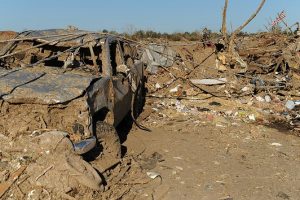33 Interdisciplinarity in a Complex World
Rhonda D. Davis
Real-world challenges often transcend the boundaries of a single discipline, necessitating interdisciplinary collaboration to develop comprehensive and effective solutions that address the complexities involved. Here are some examples:

Sustainable Urban Development
Creating sustainable and livable cities requires an interdisciplinary approach that brings together urban planners, architects, civil engineers, environmental scientists, sociologists, and economists. They collaborate to design eco-friendly buildings, efficient transportation systems, green spaces, and infrastructure that meets the needs of diverse communities while minimizing environmental impact.
Public Health Initiatives

Addressing complex public health issues like epidemics, chronic diseases, and health disparities necessitates interdisciplinary teams. These may include medical professionals, epidemiologists, social workers, data analysts, policymakers, and community organizers working together to understand the multifaceted determinants of health and develop comprehensive prevention and treatment strategies.
Cybersecurity

Protecting digital systems and data from cyber threats requires an interdisciplinary approach combining expertise from computer science, information technology, mathematics, psychology, law, and intelligence analysis. Cybersecurity professionals from these diverse backgrounds collaborate to identify vulnerabilities, develop robust security protocols, and respond to evolving cyber threats.

Food Systems
Ensuring a sustainable and equitable food system involves interdisciplinary work among agricultural scientists, nutritionists, economists, logistics experts, policymakers, and social scientists. They work together to improve agricultural practices, address food insecurity, optimize supply chains, and understand the social and cultural factors influencing food choices and consumption patterns.
Disaster Management

Effective disaster management and emergency response efforts require interdisciplinary coordination among meteorologists, engineers, logisticians, first responders, public health experts, and government agencies. This collaboration is crucial for predicting and mitigating natural disasters, coordinating relief efforts, and developing resilient infrastructure and emergency preparedness plans.